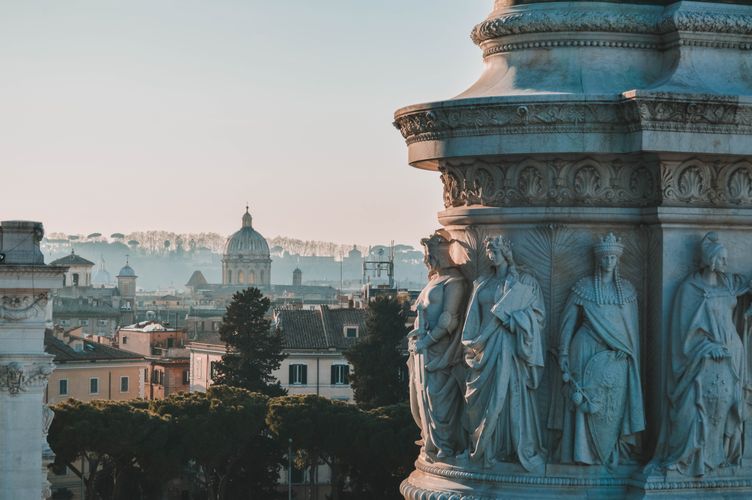
Photo by Carlos Ibáñez on Unsplash
Rome, the Eternal City. Our experience in Rome in the heatwave insanity in the middle of July had some ups and downs. But, it's Rome after all. It's hard not to be impressed by its ten-meter-thick subsoil of human history reaching back more than two and a half millennia.
Here are some of the things we found in Rome that might be helpful for other urbanists, who visit Rome for the first time.
Things to do, places to go
-
EUR, Rome's guilty pleasure. EUR is a district located on the edge of Rome’s historic downtown, and it was originally planned in the 1930s as the site for the 1942 world's fair to celebrate twenty years of fascist dictatorship in Italy. Now the district has developed as a modern heart of the city.
-
We stayed in Pigneto, one of the up-coming neighborhoods in the city. Immidiately we fell for its charms, and now Pigneto is our absolute favorite more than any other neighborhoods in Rome. Once a working-class suburb, Pigneto has grown as one of the most popular hangout neighborhoods for young people. Lots of local cafes, restaurant, maker's space, gelato shops. The recently opened Metro C station connects the neighborhood to the rest of the city.
-
Garbatella district was founded in the late 1920s as part of the English Garden city movement. It took us some time to find this specific district, but nostalgic style architectures and their beautiful semi-public courtyards are worth seeing. If you are looking for a non-touristic place to explore, this is the one.
-
We were positively surprised by the liveliness of waterfront around Tiber Island at night. Lungo il Tevere is a night market from June and August, and the long series of white tents lining the Tiber River at night is truly mesmerizing. When we were there, we could spot some outdoor cinemas as well.
Read
-
For a general hangout spot and event schedule, I think Romeing is the best English resources for visitors.
-
I am not much into archaeology and historical buildings, but this illustrated book City: A Story of Roman Planning and Construction was a great introduction to grasp the basic of efficient and rational Roman city planning. The author David Macaulay seems to be prolific — he has published many other illustrated architectural books with similar topics such as castles and cathedrals. I slowly started collecting his books — fun!
-
I traveled to Rome with Rome Tales in hand. When planning a trip to a new city, there are a few things I do to make sure that I can get the best out my time there, and one of my favorite ways to connect with a new place is through its stories: fiction and nonfiction. Rome tales, in the series of City Tales, contains a collection of twenty stories, all set in Rome.
-
I found this turbulent modern metropolis beautiful, but also undeniably filthy. During our exploration in the city, we needed to frown quite often by seeing so many overflowing dustbins on the sidewalks with an odious smell. As this article from the New York Times summarises, there’s trash almost everywhere in Rome, and it's an interesting contrast between well maintenanced roman statues and clean fountains.
-
On the same topic of dumpsters and other badly maintained public infrastructure — the website Roma Fa Schifo (which means “Rome Sucks”) might be worth visiting if you are curious about this topic. It is a community board to post pictures and collect complaints about these bad situation in the city that citizens need to face every day.
Organization, initiative
-
Baobab is an immigrant community in Rome, and their website helped me to understand what immigrants experience in their journey to a foreign land and their lives.
-
Architect Tom Rankin, the author of Rome Works: An Architect Explores the World's Most Resilient City, offers some private tours and workshop about Rome. I didn't get a chance to meet him this time, but his blog posts helped me a lot to get a more holistic understanding of the city.


